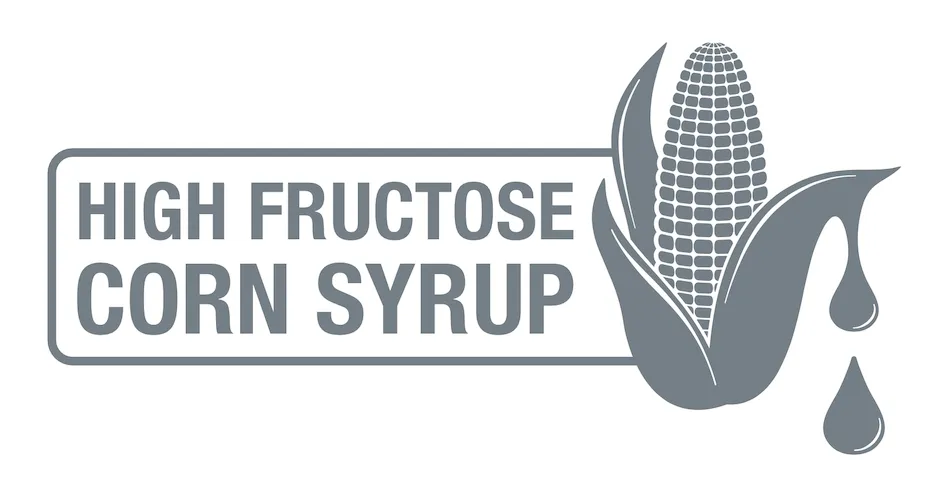Red Spots on the Skin, a Sign of Leukemia?
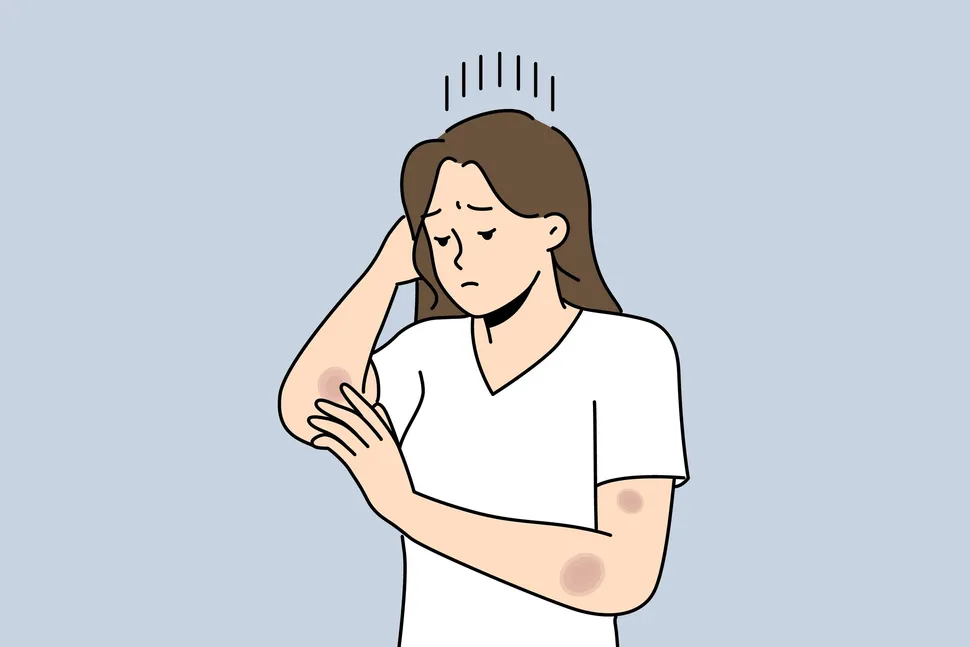
The term leukemia can refer to different blood cancers. The type of leukemia depends on the blood cell affected and whether it grows quickly or slowly. While leukemia occurs most often in adults older than 55, it is also the most common cancer in children younger than 15.
There are common findings that may indicate to health professionals that a person could have a blood disorder. A symptom that is commonly found in leukemia patients is red dots on the skin.
Keep in mind that having red dots or any of the symptoms described below does not necessarily mean you have leukemia and, similarly, not all leukemia patients have skin symptoms.
What Are The Common Skin Symptoms in Leukemia Patients?
Many of the skin symptoms are a result of the blood cell imbalance that leukemia produces: red blood cells provide a rosy or reddish color to the skin, and white blood cells protect it from harmful substances. Platelets help keep healthy blood vessels from breaking and stop blood loss when, for example, a paper cut.
When we have fewer red blood cells than normal, besides bodily symptoms, the skin can also be altered by losing the natural pinkish or reddish undertone.
When we produce too many white blood cells, the ones protecting the skin may infiltrate creating an abnormal response like rashes or itching. However, having low platelet levels can also manifest in a rash-like area in the skin. This is why it’s very important to consult a trained healthcare professional to assess these skin changes and differentiate the rashes to properly treat them.
-
Small red dots (petechiae or purpura)
Petechiae are tiny red, purple, or brown spots under the skin caused by the rupture of small blood vessels called capillaries. They are very small and often found in arms and legs. When this bleeding affects larger areas under the skin, it is known as purpura. These symptoms occur due to low platelet levels, which impair the blood’s ability to clot.
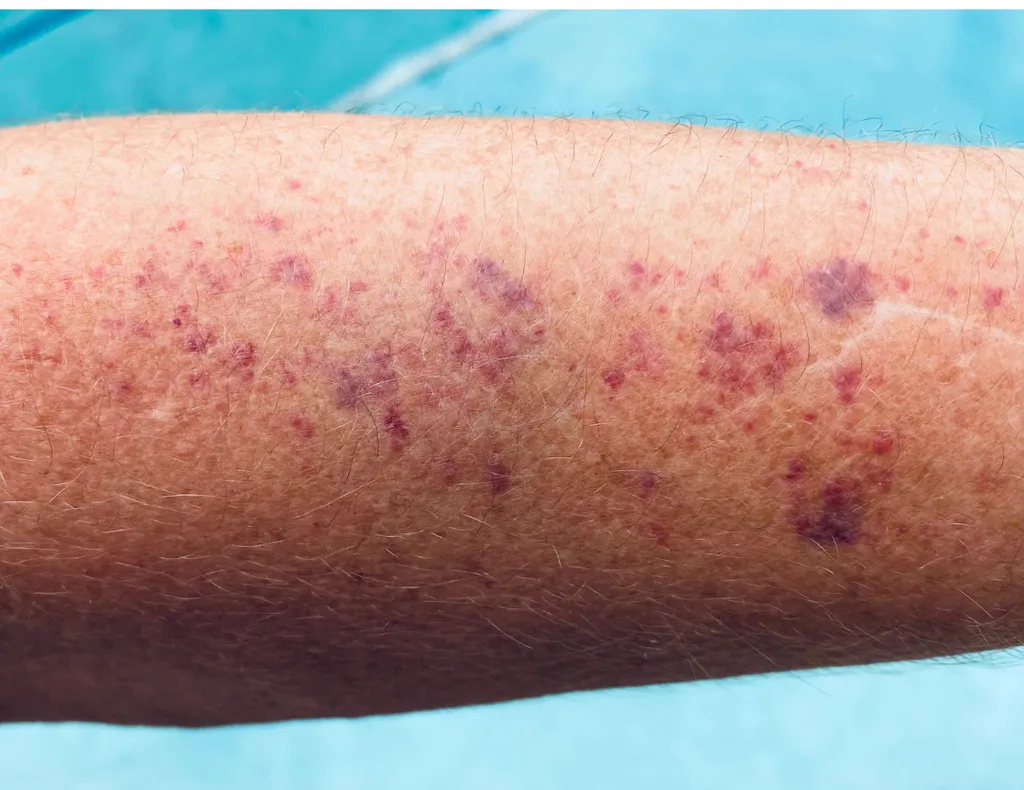
-
Easy Bruising
This refers to bruising even with minor bumps. Bruises may appear in unusual places, such as the back or hands, and take longer to heal. Patients who experience this may not know how they got those bruises until they see them or experience tenderness from the lesion.
We have a comprehensive article specifically on bruising, click here to read it.
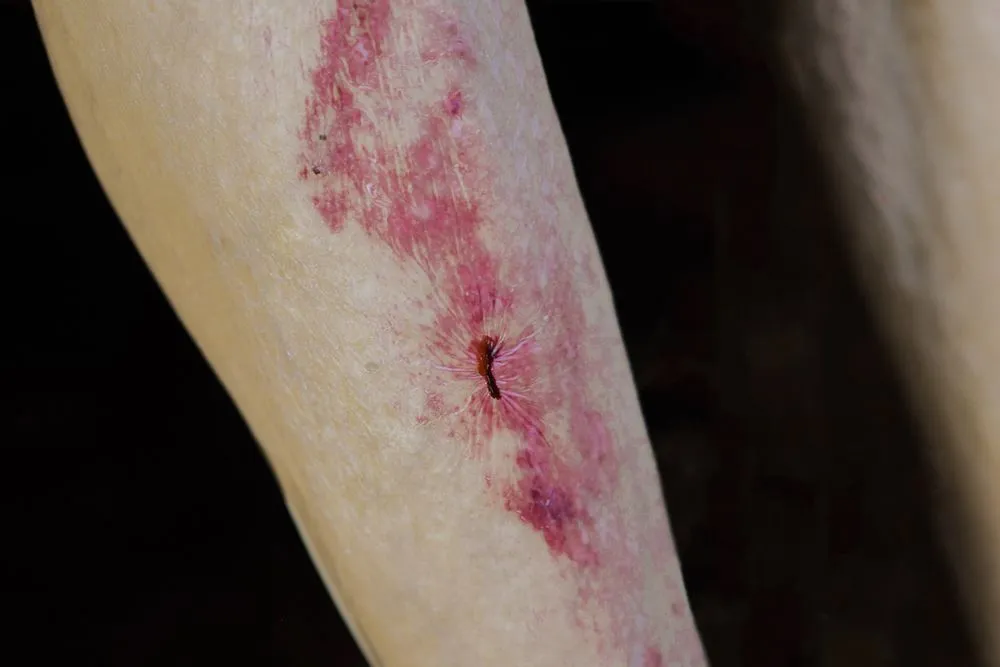
-
Pale Skin (Anemia)
Leukemia can cause a decreased production of red blood cells, leading to anemia. One visible symptom of anemia is pale or grayish skin, a person can feel fatigue, weakness, and breathlessness when the red blood cells are abnormally low and, in severe cases, may require a blood transfusion.
-
Leukemia Cutis
Leukemia cutis is a rare condition affecting up to 3% of leukemia patients. It occurs when leukemia cells infiltrate the skin and cause lesions. These lesions can be purple or red-brown and appear under the skin like freckles or as small bloody blisters. They commonly appear in the legs, arms, back, chest, scalp, and face. Leukemia cutis usually appears after patients have been diagnosed with leukemia, but in rare cases, it can come before that.
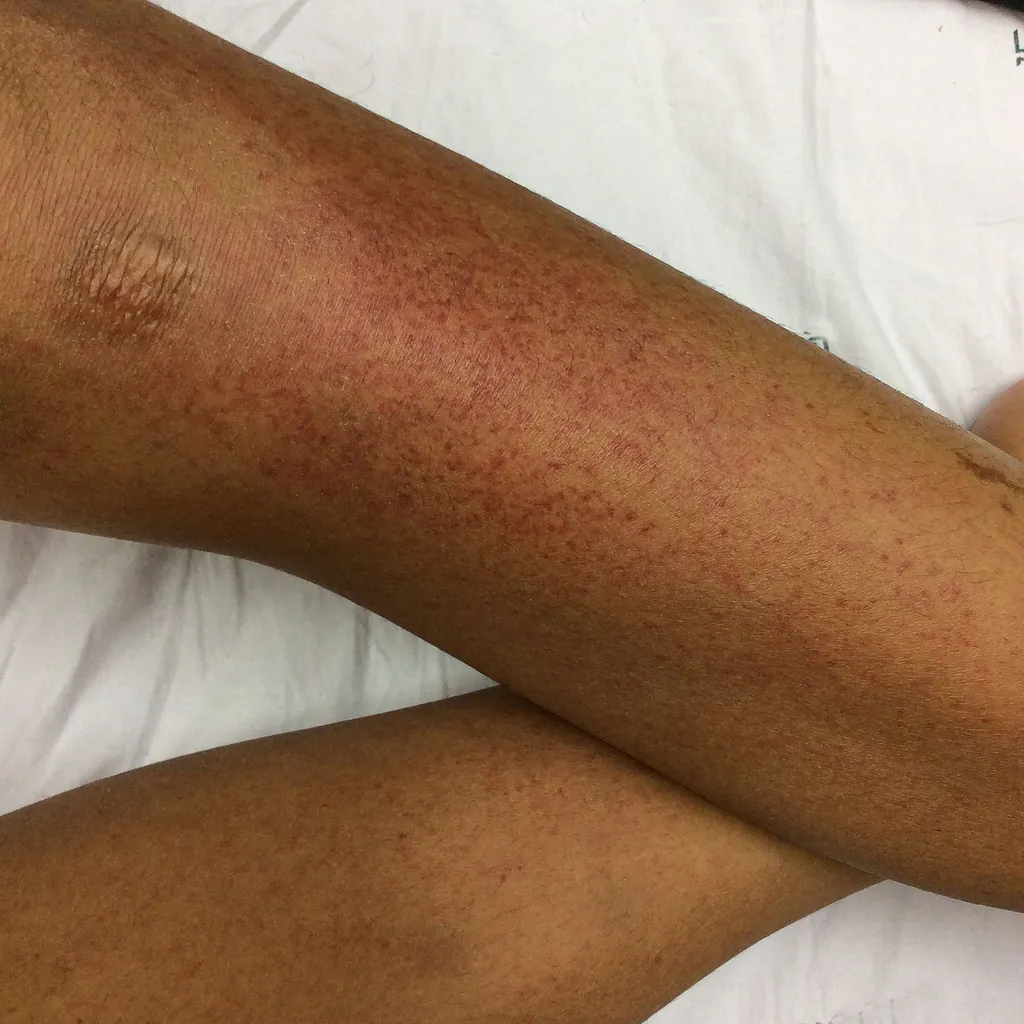
-
Acute Myeloid Leukemia (AML) Rash
Like leukemia cutis, AML rashes result from acute myeloid leukemia cells invading the skin. Symptoms include discolored patches or bumps that may be raised or tender.
-
Mouth Sores
Leukemia can cause mouth problems such as swelling of the gums, bleeding, ulcers, and petechiae in the mouth. Patients may also experience oral infections and reduced jaw mobility.
-
Sweet Syndrome or Febrile neutrophilic dermatosis
It is a rare disorder characterized by inflamed skin lesions caused when a type of blood cell called neutrophil infiltrates the skin. It can also cause eye lesions or inflammation and often comes with fever, joint pain, headaches, and fatigue. The skin lesions typically affect the arms and upper body and can be managed with steroid treatment.
-
Mastocytosis
Mast cells are immune cells located in the skin; they have granules that, under stress or foreign substances, are released and produce flushing, itching, and swelling in the skin. When an excess amount of mastocytes are activated (mastocytosis), the symptoms resemble an allergic reaction and can be treated with antihistamines.
When Should You Seek Professional Help?
Rashes and other skin issues can have many causes. However, it’s important to follow your gut and listen to your body if you think there is something out of the ordinary. Some signs that might seem odd but don’t have discomfort can also hide a more serious condition. So, to prevent any complications, it’s important to seek help from a trained health professional who can identify these symptoms and give you an accurate diagnosis.
- Notice increased bleeding or bruising.
- Develop purple patches on the skin.
- Experience frequent mouth sores.
- Have accompanying symptoms like fatigue.
These could be early signs of a blood disorder or indications that treatment adjustments are necessary for those already diagnosed.
Frequently Asked Questions
- What does a leukemia rash look like? Leukemia rashes appear as tiny red spots or purple areas that do not fade when pressed; these are caused by low platelet levels and the rupture of very small blood vessels in the skin. These spots are also known as petechiae or purpura, depending on their size.
- What does leukemia bruising look like? Leukemia bruises may occur more easily and in unusual places, often accompanied by petechiae or purpura.
- Is a rash a symptom of leukemia? Yes, it could be linked to leukemia, but rashes are also a symptom of other diseases and conditions. The diagnosis has to be determined by a health professional after examination and questioning of a patient’s overall health. Petechiae and purpura can be early signs of leukemia, though they can also result from other conditions.
- Where does a leukemia rash appear first? Rashes commonly start on the chest, abdomen, legs, and arms.
- Are leukemia rashes itchy? They can be itchy in some cases, but not always.
Understanding these skin changes can help patients and caregivers recognize early symptoms of leukemia and seek timely medical advice. If you experience any of these symptoms, consult with your healthcare provider for proper diagnosis and treatment.
Accelerate the Discovery of New Treatment Options by Connecting Your Records to HealthTree Cure Hub!
If you are interested in participating in or finding a clinical trial, locating a leukemia specialist, or staying informed about updates on leukemia, you can create a free HealthTree Cure Hub account!
Sources:
The term leukemia can refer to different blood cancers. The type of leukemia depends on the blood cell affected and whether it grows quickly or slowly. While leukemia occurs most often in adults older than 55, it is also the most common cancer in children younger than 15.
There are common findings that may indicate to health professionals that a person could have a blood disorder. A symptom that is commonly found in leukemia patients is red dots on the skin.
Keep in mind that having red dots or any of the symptoms described below does not necessarily mean you have leukemia and, similarly, not all leukemia patients have skin symptoms.
What Are The Common Skin Symptoms in Leukemia Patients?
Many of the skin symptoms are a result of the blood cell imbalance that leukemia produces: red blood cells provide a rosy or reddish color to the skin, and white blood cells protect it from harmful substances. Platelets help keep healthy blood vessels from breaking and stop blood loss when, for example, a paper cut.
When we have fewer red blood cells than normal, besides bodily symptoms, the skin can also be altered by losing the natural pinkish or reddish undertone.
When we produce too many white blood cells, the ones protecting the skin may infiltrate creating an abnormal response like rashes or itching. However, having low platelet levels can also manifest in a rash-like area in the skin. This is why it’s very important to consult a trained healthcare professional to assess these skin changes and differentiate the rashes to properly treat them.
-
Small red dots (petechiae or purpura)
Petechiae are tiny red, purple, or brown spots under the skin caused by the rupture of small blood vessels called capillaries. They are very small and often found in arms and legs. When this bleeding affects larger areas under the skin, it is known as purpura. These symptoms occur due to low platelet levels, which impair the blood’s ability to clot.

-
Easy Bruising
This refers to bruising even with minor bumps. Bruises may appear in unusual places, such as the back or hands, and take longer to heal. Patients who experience this may not know how they got those bruises until they see them or experience tenderness from the lesion.
We have a comprehensive article specifically on bruising, click here to read it.

-
Pale Skin (Anemia)
Leukemia can cause a decreased production of red blood cells, leading to anemia. One visible symptom of anemia is pale or grayish skin, a person can feel fatigue, weakness, and breathlessness when the red blood cells are abnormally low and, in severe cases, may require a blood transfusion.
-
Leukemia Cutis
Leukemia cutis is a rare condition affecting up to 3% of leukemia patients. It occurs when leukemia cells infiltrate the skin and cause lesions. These lesions can be purple or red-brown and appear under the skin like freckles or as small bloody blisters. They commonly appear in the legs, arms, back, chest, scalp, and face. Leukemia cutis usually appears after patients have been diagnosed with leukemia, but in rare cases, it can come before that.

-
Acute Myeloid Leukemia (AML) Rash
Like leukemia cutis, AML rashes result from acute myeloid leukemia cells invading the skin. Symptoms include discolored patches or bumps that may be raised or tender.
-
Mouth Sores
Leukemia can cause mouth problems such as swelling of the gums, bleeding, ulcers, and petechiae in the mouth. Patients may also experience oral infections and reduced jaw mobility.
-
Sweet Syndrome or Febrile neutrophilic dermatosis
It is a rare disorder characterized by inflamed skin lesions caused when a type of blood cell called neutrophil infiltrates the skin. It can also cause eye lesions or inflammation and often comes with fever, joint pain, headaches, and fatigue. The skin lesions typically affect the arms and upper body and can be managed with steroid treatment.
-
Mastocytosis
Mast cells are immune cells located in the skin; they have granules that, under stress or foreign substances, are released and produce flushing, itching, and swelling in the skin. When an excess amount of mastocytes are activated (mastocytosis), the symptoms resemble an allergic reaction and can be treated with antihistamines.
When Should You Seek Professional Help?
Rashes and other skin issues can have many causes. However, it’s important to follow your gut and listen to your body if you think there is something out of the ordinary. Some signs that might seem odd but don’t have discomfort can also hide a more serious condition. So, to prevent any complications, it’s important to seek help from a trained health professional who can identify these symptoms and give you an accurate diagnosis.
- Notice increased bleeding or bruising.
- Develop purple patches on the skin.
- Experience frequent mouth sores.
- Have accompanying symptoms like fatigue.
These could be early signs of a blood disorder or indications that treatment adjustments are necessary for those already diagnosed.
Frequently Asked Questions
- What does a leukemia rash look like? Leukemia rashes appear as tiny red spots or purple areas that do not fade when pressed; these are caused by low platelet levels and the rupture of very small blood vessels in the skin. These spots are also known as petechiae or purpura, depending on their size.
- What does leukemia bruising look like? Leukemia bruises may occur more easily and in unusual places, often accompanied by petechiae or purpura.
- Is a rash a symptom of leukemia? Yes, it could be linked to leukemia, but rashes are also a symptom of other diseases and conditions. The diagnosis has to be determined by a health professional after examination and questioning of a patient’s overall health. Petechiae and purpura can be early signs of leukemia, though they can also result from other conditions.
- Where does a leukemia rash appear first? Rashes commonly start on the chest, abdomen, legs, and arms.
- Are leukemia rashes itchy? They can be itchy in some cases, but not always.
Understanding these skin changes can help patients and caregivers recognize early symptoms of leukemia and seek timely medical advice. If you experience any of these symptoms, consult with your healthcare provider for proper diagnosis and treatment.
Accelerate the Discovery of New Treatment Options by Connecting Your Records to HealthTree Cure Hub!
If you are interested in participating in or finding a clinical trial, locating a leukemia specialist, or staying informed about updates on leukemia, you can create a free HealthTree Cure Hub account!
Sources:

about the author
Jimena Vicencio
Jimena is an International Medical Graduate and a member of the HealthTree Writing team. She has a passion for languages and is currently learning Japanese. In her free time, she loves playing with her cats. Jimena is also pursuing a bachelor's degree in journalism.
More on Navigating Your Health
Get the Latest Chronic Myeloid Leukemia Updates, Delivered to You.
By subscribing to the HealthTree newsletter, you'll receive the latest research, treatment updates, and expert insights to help you navigate your health.




